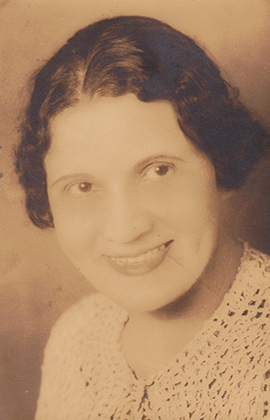Staying Fit
On a November afternoon last year in Baltimore, the otherwise ordinary-looking homes at 1532 and 1534 Druid Hill Ave. secured their place in suffrage history.
That day, a commemorative highway marker was unveiled to honor Augusta T. Chissell and Margaret Gregory Hawkins, next-door neighbors who hosted suffrage club meetings in their living rooms in 1915 and 1916 at a time when the national fight for women's suffrage was well underway.


AARP Membership— $12 for your first year when you sign up for Automatic Renewal
Get instant access to members-only products and hundreds of discounts, a free second membership, and a subscription to AARP the Magazine.
"What we're trying to share with people of all ages, young and old, is that we're still standing on these shoulders,” says Executive Director Diana M. Bailey of the Maryland Women's Heritage Center, which sponsored the tribute — the latest in a series of markers honoring the state's suffrage history.
As the 100th anniversary of the ratification of the 19th Amendment nears, scholars and historians say recognizing the contributions of black suffragists like Chissell and Hawkins remains more important than ever.


'Tenacious is not a strong enough word'
Honoring black suffragists means first acknowledging how they were sidelined from the mainstream suffrage movement, whose leaders feared alienating white women and losing support in the South, says Ida Jones, a university archivist at Morgan State University in Baltimore.
Sometimes, the discrimination was overt, as when organizers of the 1913 women's suffrage parade in Washington, D.C., ordered black participants to march at the end. At other times, it was more subtle: The National American Woman Suffrage Association, formed in 1890, declined to include black women or suffrage groups in its ranks.
That exclusion spurred the formation of separate organizations such as the National Association of Colored Women, founded in 1896 in the nation's capital. Prominent black suffragists such as Mary Church Terrell, who was born to former slaves in 1864, led the group and also went on to help found the National Association for the Advancement of Colored People in 1909 in New York City.
Leaders like Terrell “didn't ask for a place in the suffrage movement. They took their place in the movement in a variety of ways,” says Jinx Broussard, a professor at Louisiana State University in Baton Rouge and author of Giving a Voice to the Voiceless: Four Pioneering Black Women Journalists. “Tenacious is not a strong enough word for them.”
Facing what Broussard calls the “double bind of racism and sexism,” black suffragists participated in the movement through whatever means were available to them, particularly journalism and the black press.
Ida B. Wells, a pioneering journalist and anti-lynching advocate, helped found Chicago's Alpha Suffrage Club in 1913, which helped register thousands of black women to vote through on-the-ground canvasing efforts.
"They used poetry,” Broussard says. “They used speeches, events, lectures — every avenue that was available to place themselves in the movement and to secure the right to vote for their people.”

































































